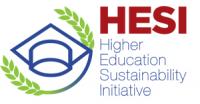State University of New York Empire State College
Description
The college is moving forward in many ways to incorporate sustainability into academics. A group of faculty and professionals were awarded a USDA Higher Education Grant to develop this learning module which will allow students to take data in their own backyard and explore the impacts of climate change on non-native beetle species.This learning module can be used across curriculums and will stretch into the community to as a citizen science project in the near future. The project team has a goal of incorporating this module into at least 10 new studies in the next 3 years.SUNY Empire State College is committed encouraging research on sustainable development issues to including new and innovative technologies. With funding provided by the New York State Energy Research and Development Authority and assistance through a third party research firm, the college is studying the amount of energy saved by virtualizing all college servers. The information found in this research project, as well as the experience gained in the transition, will be diffused through publications and presentations to assist and encourage other colleges and similar institutions to make the transition as well. The college will have made the full transition and have a final research report by 2015.SUNY Empire State college is committed to greening the campus by:• Reducing the college's carbon footprint 10% by 2023 compared to 2010 carbon emissions. This is measured using the Clean Air- Cool Planet calculator. The college made this commitment by signing the American College and Universities Presidents' Climate Commitment.• Reducing travel for the college 5% by 2015. The college has invested in high quality video conferencing for all of its locations. As grant from the New York State Energy Research and Development Authority will be used to hire consultants that will assist the college in developing ways to encourage video conference use instead of travel by its employees.With funding provided by the New York State Energy Research and Development Authority and assistance through a third party research firm, the college is studying the amount of energy saved by virtualizing all college servers.The college has invested in high quality video conferencing for all of its locations. As grant from the New York State Energy Research and Development Authority will be used to hire consultants that will assist the college in developing ways to encourage video conference use instead of travel by its employees.The college sustainability committee will continue to offer at least three community education programs each year in three different communities in New York State. In addition the college will continue to participate in community events that support local sustainability groups including Bike to Work Day and Recyclemania events.
SDGS & Targets
Goal 4
Ensure inclusive and equitable quality education and promote lifelong learning opportunities for all
4.1
By 2030, ensure that all girls and boys complete free, equitable and quality primary and secondary education leading to relevant and effective learning outcomes
4.1.1
Proportion of children and young people (a) in grades 2/3; (b) at the end of primary; and (c) at the end of lower secondary achieving at least a minimum proficiency level in (i) reading and (ii) mathematics, by sex
4.1.2
Completion rate (primary education, lower secondary education, upper secondary education)
4.2
By 2030, ensure that all girls and boys have access to quality early childhood development, care and pre-primary education so that they are ready for primary education
4.2.1
Proportion of children aged 24–59 months who are developmentally on track in health, learning and psychosocial well-being, by sex
4.2.2
Participation rate in organized learning (one year before the official primary entry age), by sex
4.3
By 2030, ensure equal access for all women and men to affordable and quality technical, vocational and tertiary education, including university
4.3.1
Participation rate of youth and adults in formal and non-formal education and training in the previous 12 months, by sex
4.4
By 2030, substantially increase the number of youth and adults who have relevant skills, including technical and vocational skills, for employment, decent jobs and entrepreneurship
4.4.1
Proportion of youth and adults with information and communications technology (ICT) skills, by type of skill
4.5
4.5.1
Parity indices (female/male, rural/urban, bottom/top wealth quintile and others such as disability status, indigenous peoples and conflict-affected, as data become available) for all education indicators on this list that can be disaggregated
4.6
By 2030, ensure that all youth and a substantial proportion of adults, both men and women, achieve literacy and numeracy
4.6.1
Proportion of population in a given age group achieving at least a fixed level of proficiency in functional (a) literacy and (b) numeracy skills, by sex
4.7
By 2030, ensure that all learners acquire the knowledge and skills needed to promote sustainable development, including, among others, through education for sustainable development and sustainable lifestyles, human rights, gender equality, promotion of a culture of peace and non-violence, global citizenship and appreciation of cultural diversity and of culture’s contribution to sustainable development
4.7.1
Extent to which (i) global citizenship education and (ii) education for sustainable development are mainstreamed in (a) national education policies; (b) curricula; (c) teacher education and (d) student assessment
4.a
Build and upgrade education facilities that are child, disability and gender sensitive and provide safe, non-violent, inclusive and effective learning environments for all
4.a.1
Proportion of schools offering basic services, by type of service
4.b
4.b.1
Volume of official development assistance flows for scholarships by sector and type of study
4.c
By 2030, substantially increase the supply of qualified teachers, including through international cooperation for teacher training in developing countries, especially least developed countries and small island developing States
4.c.1
Proportion of teachers with the minimum required qualifications, by education level
SDG 14 targets covered
Deliverables & Timeline
Resources mobilized
Partnership Progress
Feedback
Action Network


Timeline
Entity
SDGs
Geographical coverage
More information
Countries
Contact Information
Merodie A. Hancock, President
